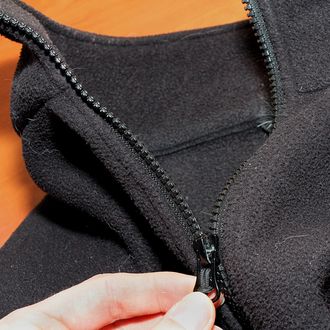
When buying your next Patagonia fleece, pick the color that looks most edible — new research suggests tiny pieces of it are going to pollute the food supply. Scientists have long expressed dismay about other microplastics, like the ones in the Great Pacific garbage patch that’s the size of Texas, but now there’s also concern about synthetic fleece as a microscopic pollutant that wildlife are all but certainly eating. Little microfibers come off the jacket while it’s in the wash; from here, it’s down the drain and over to wastewater treatment plants, where fibers that aren’t caught end up back in the environment. “I have no doubt that every time I eat oysters and mussels I eat at least one microfiber,” ecologist Chelsea Rochman, who runs a lab at the University of Toronto, tells NPR.
A study Patagonia did last year in collaboration with UC Santa Barbara researchers found that every time a fleece jacket gets washed, it can lose up to two grams of microplastics. Most of those get filtered out, but a good amount also don’t — and studies show they’re turning up in places people would prefer they didn’t. Microfibers have been found in China’s table salt, for example, and ocean fish caught in California. (“If you’re eating fish, you’re eating plastic,” another expert says.) As creatures that ingest whatever particulates float by, bivalves are notoriously susceptible, especially because these microfibers are thought to comprise 85 percent of trash humans create on ocean shorelines. At less than a millimeter in length, they’re more problematic than, say, an empty soda can or a candy wrapper.
The jury’s still out on whether they can harm the human body, but studies do suggest they kill off water fleas, and cause crabs to go on unhealthy diets. Also, that washer–to–wastewater-treatment-plant route is just one way pollutants can enter the food supply; the research group that worked with Patagonia adds that there could be “additional pathways that scientists have yet to understand.”




